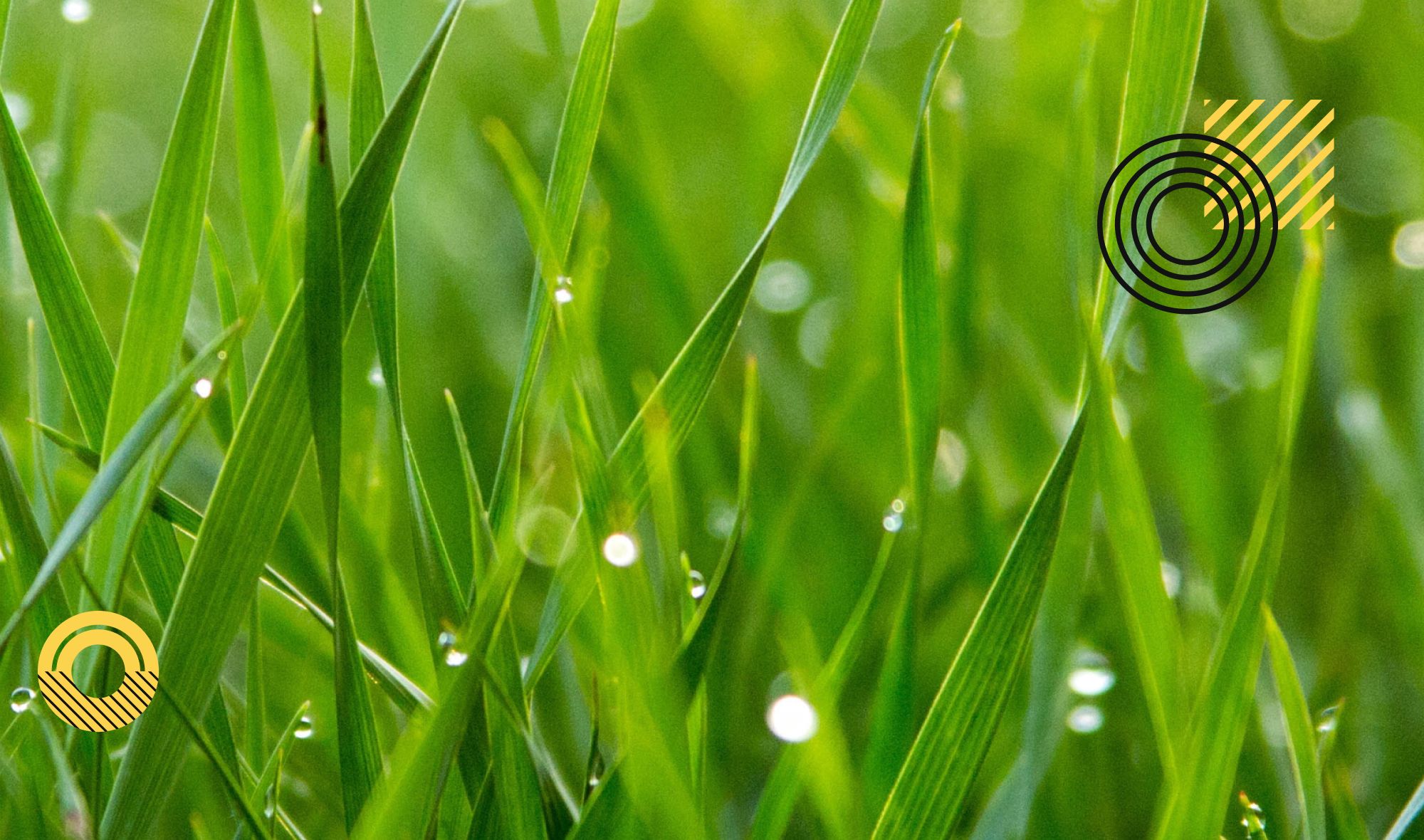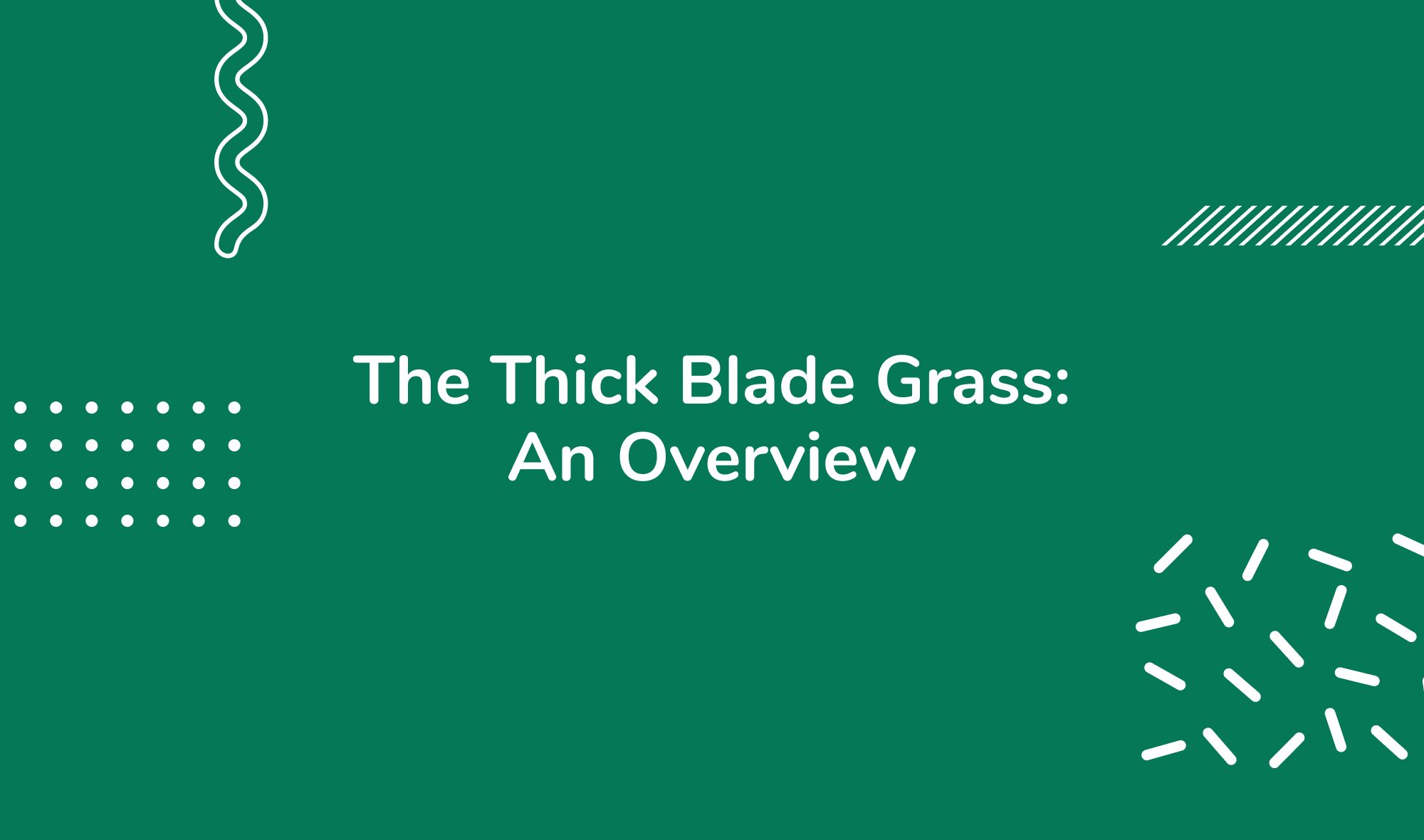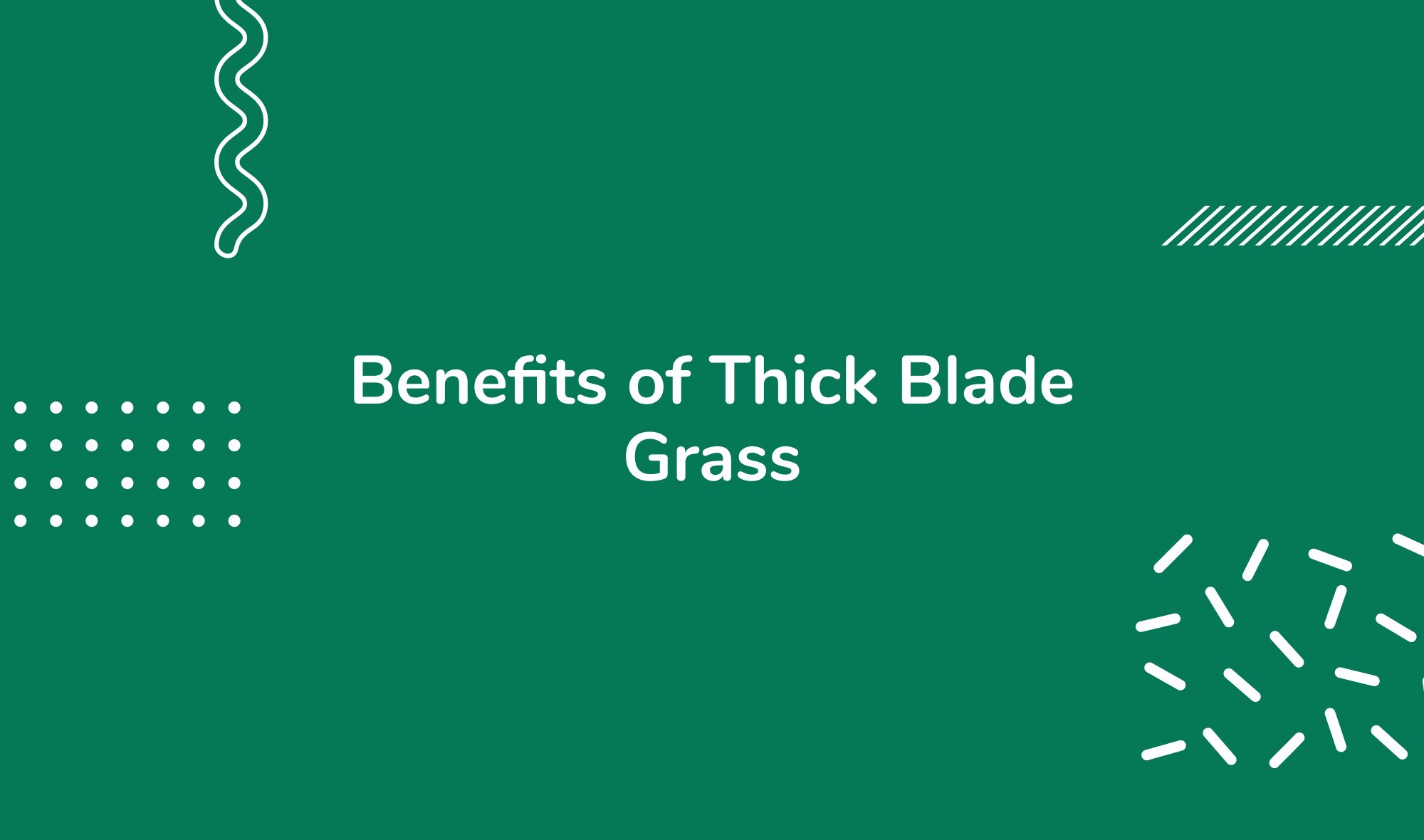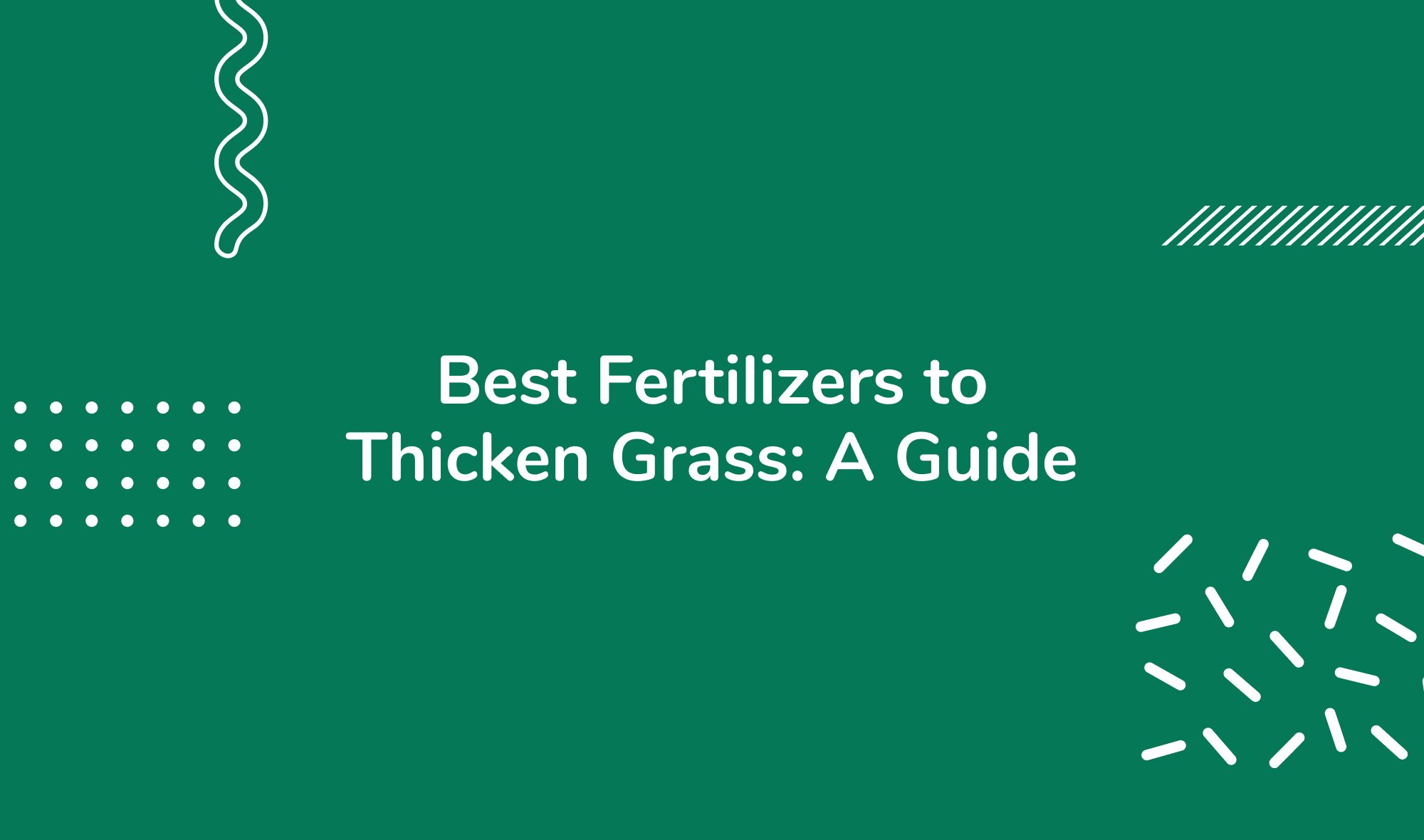Unraveling the Benefits of Thick Grass for a Healthier Lawn
By HeyHome • June 15, 2023
Key Takeaways
- Understanding your grass type and its unique requirements is crucial for lawn health.
- Proper selection of grass seed and fertilizer can encourage thicker grass growth.
- Regular mowing with appropriate blades can maintain a thick, healthy lawn.

Imagine stepping outside on a warm, sunny day and setting foot on a lawn that's dense, lush, and vibrant. The feeling of cool, thick grass beneath your bare feet, the sight of green blades stretching out to meet the horizon - it's an image that brings to mind the epitome of a healthy, well-maintained garden. But attaining such a picturesque scene involves more than just sowing some grass seed and hoping for the best. It requires knowledge, care, and attention to detail.
In this guide, we'll delve into the world of thick blade grass and explore its numerous benefits for a healthier lawn. We'll unravel the mysteries of grass roots, the foundation of any great lawn, and share the best strategies to grow your grass thicker and more resilient. We'll also discuss the importance of soil testing and how different grass species – from cool season grasses such as fine fescue and Kentucky bluegrass, to warm season varieties like centipede grass – respond to different soil conditions and care routines.
Whether you're battling with a thin lawn, trying to enhance the appeal of your existing lawn, or starting anew with fresh soil and new grass seed, this comprehensive guide will provide the knowledge and tools you need to create and maintain a lush lawn that is the envy of your neighborhood. Read on to discover how to make your lawn grasses thrive, resist weeds, and provide a beautiful and comfortable space for relaxation and play.
Join our newsletter
Stay on top of the latest in landscaping and lawn care with one valuable tip right in your inbox every Saturday morning.
Understanding Grass Biology
When we admire a lawn, we're usually focused on what's above the ground - the green grass that forms a lush, thick blanket. However, the true strength of any grass type, whether it's tall fescue, fine fescue, or centipede grass, lies beneath the surface, in the intricate network of grass roots.
A Closer Look at Grass Roots and Their Role in Lawn Health
The root system is like the hidden backbone of your lawn, providing support and nourishment to the grass. Deep roots extend into the soil, absorbing all the essential nutrients and water required for grass to thrive. This is why a healthy root system is fundamental for a thick lawn and why a soil test is a crucial first step in any lawn care regimen.
A soil test will determine your lawn soil's pH level and nutrient composition, among other factors, and guide you in adjusting the soil conditions for optimal root development. After all, different grass species, including cool season grasses like Kentucky bluegrass and sheep fescue, and warm season grasses such as centipede grass, have distinct preferences for soil pH and nutrient levels.
Furthermore, compacted soil can hinder root growth and, by extension, your pursuit of a thicker lawn. If the soil is too compacted, the roots struggle to penetrate and spread, limiting their access to nutrients and water, and causing thin or bare spots in your lawn. Therefore, addressing soil compaction should be high on your list of lawn care priorities.
In conclusion, understanding the biology of your lawn grasses, particularly the importance of a healthy root system, will enable you to better cater to their needs. Whether you're dealing with a shady lawn, high foot traffic, or other challenging conditions, a deep understanding of grass roots will set you on the path to a fuller, healthier lawn.
The Thick Blade Grass: An Overview

When we talk about thick blade grass, we are not referring to one specific grass species but rather a characteristic that certain types of grass possess. Thick blade grasses, as the name suggests, have wider blades than their counterparts. Examples include certain varieties of tall fescue, Kentucky bluegrass, and St. Augustine grass, all known for their robust, thick grass blades. But what sets them apart?
What Sets Thick Blade Grass Apart From Other Types
Thick blade grasses often stand out due to their lush and dense appearance, offering an aesthetic appeal that can transform any garden or yard into a stunning, green oasis. However, the benefits of these grass types extend beyond mere visual appeal.
Firstly, their wide blades make them more visible from a distance, providing a fuller lawn appearance even if the grass density isn't extremely high. This feature can be particularly useful if your lawn is still growing or recovering from damage or stress.
Secondly, because of their robust structure, thick blade grasses can be quite resilient. They are often better at withstanding high foot traffic, harsh weather conditions, and some types of pests.
Finally, thick blade grasses tend to have a larger root system that reaches deeper into the soil. This quality enables them to better withstand dry periods, as they can access water stored deeper in the soil. It also means they can extract more nutrients, promoting stronger, healthier growth, and a thick lawn that feels wonderful under bare feet.
Understanding these benefits can guide your decision when choosing a grass type for your lawn, especially if you live in a region with challenging growing conditions. For instance, if you reside in the Gulf Coast region, you might opt for a warm season grass like St. Augustine due to its thick blades and heat tolerance.
In conclusion, thick blade grass is not only about aesthetics; it's a practical choice for many homeowners who want a lush, resilient, and low-maintenance lawn.
Benefits of Thick Blade Grass

Having a vibrant, lush lawn is more than just a cosmetic upgrade; it can contribute to the overall health of your garden, making it more resilient to various environmental stresses. Thick blade grass plays a significant role in achieving this kind of lawn. But what makes it so beneficial?
Why Thick Blade Grass Can Contribute to a Healthier Lawn
- Resilience to Foot Traffic and Other Stresses: Thick blade grass varieties like tall fescue and Kentucky bluegrass are known for their resilience. The robust structure of their blades can withstand the wear and tear of high foot traffic, making them an ideal choice for family yards, dog runs, and public parks. Additionally, these grasses can cope better with fluctuations in weather and soil conditions, from colder temperatures in the winter to dry spells in the summer.
- Better Weed Resistance: A thick lawn of wide-blade grass is a formidable barrier against weeds. With less room for weeds to establish, the spread of these unwanted guests can be significantly reduced. This attribute reduces the need for frequent mowing and the application of weed control measures, contributing to a healthier and low-maintenance lawn.
- Aesthetic Appeal: There's no denying the visual appeal of thick blade grass. The wide, green blades provide a lush, dense look that adds to your property's beauty and value. Walking barefoot on such a lawn is a delightful experience, reminding us of the joys of connecting with nature.
- Supports Soil Health: Grass with thicker blades tends to have a more extensive root system, helping reduce soil erosion and improve soil structure over time. Moreover, these grasses are better at absorbing nutrients from the soil, contributing to a balanced, nutrient-rich lawn soil environment.
- Versatility: Thick blade grasses come in both cool season and warm season varieties, making them suitable for different climates. Whether you're in a region favoring cool season grasses like Kentucky bluegrass or a warmer area where centipede grass thrives, there's a thick blade grass for you.
In conclusion, choosing thick blade grass for your lawn is a strategic decision that combines both aesthetic and practical benefits. It's an investment in the long-term health and beauty of your lawn, providing a green, lush outdoor space that will be enjoyed for years to come.
For an even more comprehensive guide to lawn care and maintaining a vibrant lawn, consider reading our post on achieving the greenest grass.
How to Encourage Thick Grass Growth

Achieving a thick, lush lawn involves more than just planting grass seed and hoping for the best. It requires strategic choices and proper lawn care practices. In this section, we'll explore how you can encourage thick grass growth and maintain the health of your lawn.
Selecting the Right Grass Seed for a Thicker Lawn
The journey to a thick lawn begins with selecting the right grass seed. Remember, not all grasses are created equal. Some grass species naturally produce thicker blades and denser growth than others. Therefore, understanding your lawn's needs and the particular characteristics of different grass species is vital.
Cool season grasses like Kentucky bluegrass, tall fescue, and fine fescue are known for their thick blades and ability to thrive in colder temperatures. They can be a great choice if you live in a region with cold winters and moderate summers. Warm season grasses such as centipede grass, known for its tolerance to heat and minimal maintenance requirements, are ideal for warmer climates.
The selection process also involves considering the conditions of your lawn. Is it a high-traffic area? Does it receive enough sunlight, or is it a shady lawn? How are the soil conditions? A soil test can provide valuable information about your soil's pH and nutrient levels, guiding your choice of grass seed.
Making the Most of Your Green Grass: Care and Maintenance Tips
Once you've sown your chosen grass seed, the next step is to ensure proper care and maintenance. Here are some key tips to maintain your green grass and encourage thicker growth:
- Proper Fertilization: Applying a starter fertilizer after seeding and regular feeding afterward will provide your new grass with essential nutrients it needs to grow thick and healthy.
- Irrigation: Proper watering is essential, especially for new grass. The aim should be to keep the soil consistently moist but not waterlogged. An irrigation system can be a valuable tool in maintaining this balance.
- Regular Mowing: Frequent mowing encourages grass to grow denser rather than taller. Remember to adjust your mowing height according to the specific needs of your grass type and the season.
- Weed Control: Pre-emergent herbicides can help keep weeds at bay, allowing your grass to establish without competition.
- Soil Management: Address issues such as soil compaction and acidity to create an optimal environment for your grass to thrive.
With these strategies, you can support your grass's journey from a handful of seeds to a thick, lush lawn that not only enhances the beauty of your property but also provides a comfortable space for outdoor activities. So, here's to fewer weeds, deep roots, and the joy of stepping on a vibrant green carpet under the open sky!
Best Fertilizers to Thicken Grass: A Guide

When it comes to lawn care, the correct use of fertilizers is key to achieving a lush, thick lawn. Fertilizers provide essential nutrients that your grass may not be getting from the soil, helping it grow stronger and healthier. But with so many fertilizers available in the market, making the right choice for your lawn can be a daunting task. In this section, we'll explore how fertilizers contribute to thicker grass growth and guide you in selecting the best fertilizer for your lawn.
How Fertilizers Can Contribute to Thicker Grass Growth
Fertilizers provide grass with essential nutrients that contribute to its growth and health. Nitrogen, in particular, plays a significant role in promoting lush, green grass growth. Fertilizers high in nitrogen can help thicken your grass, enhancing its color and density.
However, achieving a thick lawn is not just about applying high-nitrogen fertilizers. Other nutrients like phosphorus and potassium are also essential. Phosphorus supports root development, while potassium enhances the overall health and disease resistance of your grass.
Using a slow-release fertilizer can be beneficial as it provides a steady supply of nutrients over an extended period. This ensures that your lawn receives all the nutrients it needs without the risk of over-fertilization, which can cause unnecessary stress to your grass.
Join our newsletter
Stay ahead of the curve in all things outdoor.
Get the inside scoop on the latest landscaping, lawn care, and fencing trends with 1 actionable tip every Saturday morning.
Making an Informed Choice: Selecting the Best Fertilizer for Your Lawn
To guide you in choosing the best fertilizer to thicken your grass, here are some products that are known for their effectiveness:
- Milorganite: This is an organic, slow-release fertilizer high in nitrogen. Made from a byproduct of wastewater treatment, Milorganite is both environmentally friendly and pet safe. It works on all grass types and is also budget-friendly, making it a popular choice for homeowners.
- Scotts Turf Builder Lawn Food: A synthetic high-nitrogen fertilizer that delivers quick results. Easy to use, it works on all grass types and comes in different formulas to cater to the needs of various lawns. This too is a budget-friendly option.
- Pennington UltraGreen Lawn Fertilizer: This synthetic, high-nitrogen fertilizer is weather-resistant, allowing application even under hot or humid conditions. Effective on all grass types, it comes in various formulas. Though slightly pricier than Milorganite or Scotts Turf Builder, the weather-resistant feature might justify the extra cost.
- Jonathan Green Organic Lawn Food: An organic fertilizer high in nitrogen and phosphorus, this slow-release option provides nutrients to your lawn over a longer period. Effective on all grass types, it may be more expensive than synthetic fertilizers and harder to find, but its benefits might be worth the investment.
Choosing the best fertilizer for your lawn is about understanding your lawn's needs and the different offerings available. With the right fertilizer, you're one step closer to enjoying a thick, lush lawn that will be the envy of your neighbors.
Grass-Specific Guides to a Thicker Lawn

Different grass varieties require different care and maintenance strategies to reach their full potential. Here, we'll dive into specific guides on how to encourage a thicker lawn for Bahia Grass, Bermuda Grass, and St. Augustine Grass.
Bahia Grass: Simple Steps to Make it Thicker
Bahia Grass is a warm-season grass that thrives in hot climates. It's known for its low maintenance and drought tolerance, making it a popular choice for lawns in the southern United States.
- Frequent Mowing: Bahia Grass prefers a mowing height of 3 to 4 inches. Mowing frequently can help stimulate denser growth and discourage weed invasion.
- Irrigation: While Bahia Grass is drought-tolerant, it still requires regular watering to maintain a thick, green lawn, particularly during dry spells.
- Fertilization: Apply a high-nitrogen fertilizer during the active growing season to encourage thick and robust growth.
Bermuda Grass: Effective Ways to Enhance Thickness
Bermuda Grass is another warm-season grass loved for its exceptional heat and drought resistance. It is widely used in the southern parts of the U.S, from the Gulf Coast to California.
- Sun Exposure: Bermuda Grass loves sunlight. For a thicker lawn, ensure your Bermuda Grass gets at least 6 hours of direct sunlight each day.
- Proper Mowing: Bermuda Grass prefers a shorter mowing height, usually between 1 and 1.5 inches. Regular mowing encourages the grass to grow sideways, promoting a thicker lawn.
- Fertilization: Bermuda Grass responds well to regular feeding. A high-nitrogen fertilizer applied during the growing season can contribute to a thicker and greener lawn.
St. Augustine Grass: Tips to Promote Thicker Growth
St. Augustine Grass is another warm-season grass popular in coastal areas. It's known for its high tolerance to salt and its ability to create a dense, carpet-like lawn.
- Shade Tolerance: Unlike many grass types, St. Augustine Grass does well in partial shade. Make sure it gets a few hours of sunlight each day but doesn't get scorched by the intense midday sun.
- Mowing and Irrigation: Maintain a mowing height of 2.5 to 4 inches. Deep, infrequent watering encourages the development of a deep root system for a thick and healthy lawn.
- Fertilization: Use a slow-release fertilizer high in nitrogen to feed your St. Augustine Grass. Proper feeding promotes thick, lush growth.
Regardless of the type of grass you have, the goal remains the same: a thick, lush, and healthy lawn. With the right care, any lawn can become a beautiful green oasis.
Tools for Maintaining a Thick Lawn

The right tools can significantly ease the process of lawn maintenance and enhance the results you achieve. In particular, lawn mowers play a critical role in maintaining lawn health and encouraging denser grass growth. Let's delve into this aspect and guide you in selecting the best lawn mower blades for thick grass.
The Role of Lawn Mowers in Lawn Health
Proper mowing is an integral part of lawn care. It not only contributes to your lawn's aesthetic appeal but also to its overall health. Regular mowing encourages your grass to grow thicker and healthier by stimulating growth and preventing the domination of weeds.
The key to mowing for a thick lawn is knowing the correct mowing height for your particular grass species. This knowledge helps you avoid mowing your grass too short, a common mistake that can expose your soil to sunlight, promoting weed growth and causing unnecessary stress to your grass.
Choosing the Best Lawn Mower Blades for Thick Grass
When it comes to dealing with thick grass, not all mower blades are created equal. The right blade can make all the difference. Here are a few pointers to consider when choosing mower blades for thick grass:
- High-Lift Blades: Also known as 2-in-1 blades, high-lift blades are designed to cut the grass and lift the clippings into the bagger. They are perfect for handling tall, thick grass as they offer a more aggressive cut and better suction to lift the grass.
- Mulching Blades: If you prefer to leave clippings on the lawn, mulching blades, also known as 3-in-1 blades, are your best bet. These blades cut the grass into fine pieces that decompose quickly, returning nutrients back to the soil.
- Sharpness: No matter the type of blade, maintaining its sharpness is crucial. Sharp blades cut grass cleanly, reducing stress on the grass and making your mower more efficient.
- Durability: Lastly, look for blades made from durable materials like hardened steel to ensure they can handle the demands of cutting thick grass without breaking or dulling quickly.
Your choice of lawn mower and blades can impact your lawn's health and appearance. Choose wisely and mow regularly for a thicker, healthier lawn.
Conclusion
Achieving a thick, lush lawn is the result of diligent care, appropriate practices, and the right tools. Understanding your grass type, its unique characteristics, and the specific care it requires is the first crucial step towards realizing a fuller lawn. Thick blade grass, with its hardy nature and aesthetic appeal, offers an excellent choice for homeowners seeking to boost their lawn's appearance and health.
By selecting the right grass seed, ensuring a balanced diet of essential nutrients through careful fertilizer selection, and regular mowing with suitable equipment, you can transform even the thinnest of lawns into a dense, green haven. Remember, the secret to a thicker lawn doesn't lie in quick fixes but in consistent, ongoing care.
Whether you're growing Bahia, Bermuda, or St. Augustine grass, the principles remain the same. With a bit of knowledge and regular care, you can make your lawn the envy of the neighborhood. So, get out there, enjoy the feeling of the grass under your bare feet, and take pleasure in the rewards of your hard work. Because a healthy lawn isn't just a luxury – it's a lifestyle.
May your lawn be the lushest, your grass the greenest, and your care the constant. Here's to thicker, healthier lawns and the joy they bring!
Join our newsletter
Stay ahead of the curve in all things outdoor.
Get the inside scoop on the latest landscaping, lawn care, and fencing trends with 1 actionable tip every Saturday morning.